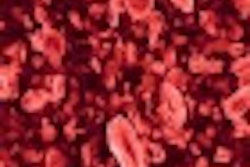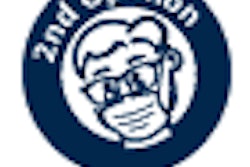

Perhaps the most striking claim came from BioHorizons, which this year launched a series of implants whose collars are designed to integrate with soft tissue.
The integration is possible because of Laser-Lok technology, a surface made up of microscopic channels, as many as 140 scored on the collar of the implant, said Kiran Patel, product support specialist.
The system was developed in the 1980s for orthopedic medicine and has undergone decades of testing, she said. "It does a completely different kind of attachment, soft-tissue and bone attachment, which creates a biological seal."
She cited a study presented at the 2004 annual meeting of the Academy of Osseointegration (AO) by Gabriele Pecora et al of the Group for Implant Research, in Rome, and other researchers. The investigators found only 0.5 mm of crestal bone loss around Laser-Lok implants 37 months after placement, compared to almost 2 mm of loss around standard implants. "It's just proven to be phenomenal for bone preservation," she said.
And she pointed to a 2008 International Journal of Periodontics & Restorative Dentistry study (Vol. 28:2) that found that Laser-Lok inhibits apical migration of the epithelium.
Laser-Lok, the only surface approved by the FDA for soft-tissue attachment, is available on three types of BioHorizons implants: the tapered, the single-stage, and -- since August of this year -- the internal, said Patel.
Saving a step
Another unique implant innovation is aimed at saving a step for restorative dentists. Biomet 3i this year launched a type of healing collar that can be left in place on the implant when an impression is made to create a custom abutment.
The process eliminates the need for an impression coping, said Joe O'Toole, territory manager. "It saves a lot of time and inconvenience," he said. "It can be pretty cumbersome for the general dentist to have all these pieces."
Codes embedded on the occlusal surface of the Encode Healing collar translate the implant depth, hex-orientation, platform diameter, and interface so that a custom abutment can be made.
In addition, according to a company brochure, the system spares soft tissue from the trauma of having the healing collar removed and the impression coping placed, then removed in its turn.
Cutting blades
Not to be outdone, Nobel Biocare was promoting its NobelActive implant, launched in the first quarter of this year.
The selling feature on this implant is its shape. Its double-lead thread pattern consists of deep and widely spaced 35-degree threads emanating from a pair of cutting blades at the apex.
This enables the implants to cut through bone and actively change direction, said Brian Volken, director of Procera technical marketing. "You can underprepare the bone so in soft bone you get phenomenal osteotomy," he said. "And you can back it up and alter direction."
In addition, he said, the implant taps on the reverse cycle. And a flute leaves room where bone fragments can reside.
Another selling feature of the NobelActive is a back-tapered coronal portion to maximize the volume of alveolar bone.
What will they think of next?



















